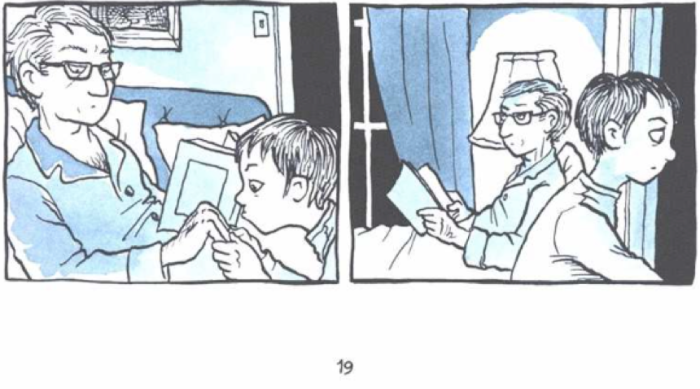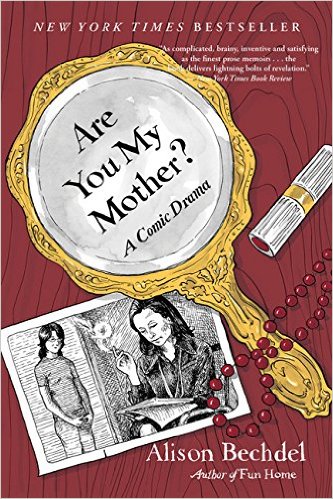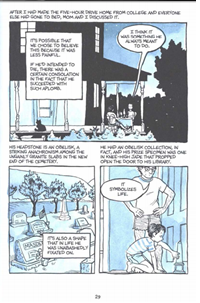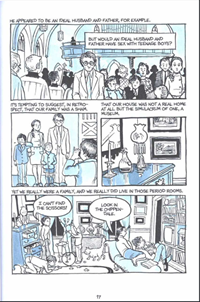Alison Bechdel was born on September 10th, 1960 in Lock Haven, Pennsylvania and then grew up in Beech Creek, Pennsylvania. Alison’s experiences within her life and the interactions she’s had have made an impact in her success as a cartoonist and author and her failures. The events that have taken place in Alison’s life have most definitely made her who she is and the events that have surrounded Alison’s life throughout the decades.
The 1960’s – 1969
1961 – The Berlin wall begins
1963 – The Supreme Court ruled that prayed in schools is unconstitutional
1963 – Martin Luther King delivers “I Have a Dream”
1963 – John F. Kennedy is assassinated
1964 – 24th amendment is ratified
1964 – Lyndon B. Johnson (president) signed the Civil Rights Act, making segregation in public illegal
1965 – Malcom X is assassinated
1965 – The Los Angeles Riot happens in August.
1967 – The first superbowl
1968 – Martin Luther King is assassinated
1969 – Woodstock takes place
1969 – Neil Armstrong is the first man to walk on the moon
Within 1960 – 1969, Alison was still very young and many of the events that had taken place within this time period may not have directly affected her within these years. The U.S government was changing laws to include all citizens and create equality among the country. Equality continued with Woodstock as the event brought individuals together to celebrate equality and peace. Although equality was moving forward within this time period, the progression was slow and citizens were not ready to accept the concept of openly gay couples or individuals within this time period.
1970 – 1979
1970 – The first Earth Day takes place
1971 – Ban on cigarette commercials goes into effect
1971 – Voting age is lowered to 18 years of age instead of 21
1971 – Walt Disney world opens in Orlando, Florida
1973 – Roe vs. Wade legalizes abortion in the USA
1973 – U.S military troops are pulled out of Vietnam
1976 – The Viking 1 space probe lands on Mars, followed by the Viking II, creating the first coloured pictures of Mars
1976 – Microsoft is created
1977 – First Star wars movie is released
1977 – Elvis is found dead
1977 – 15 nations sign a nuclear proliferation pact, resulting in slowing the spread of nuclear weapons around the world
1979 – The Three Mile Nuclear Power Plant in Middletown, Pennsylvania, has an accident where a partial core meltdown is recorded
1979 – The Sony Walkman is created
Within the next 10 years of Alison’s life, more events have taken place that greater impact her life. By the time 1978 comes around, Alison is now allowed to vote since the voting age has changed from 21 to 18 in 1971. Progress continues with equality for women’s rights as the USA legalizes abortion in 1973, allowing women to abort if the fetus is less than 6 months old. During this time in American history, gay rights movements were progressing and the community was growing, but the size of the community is far greater in today’s society. Many were encouraged to express their sexuality, yet there was much hesitation. The link provided below is a timeline of the American Gay Rights movement from 1924 – 2011.
http://www.pbs.org/wgbh/americanexperience/features/timeline/stonewall/
Written by Jennifer Richards

















